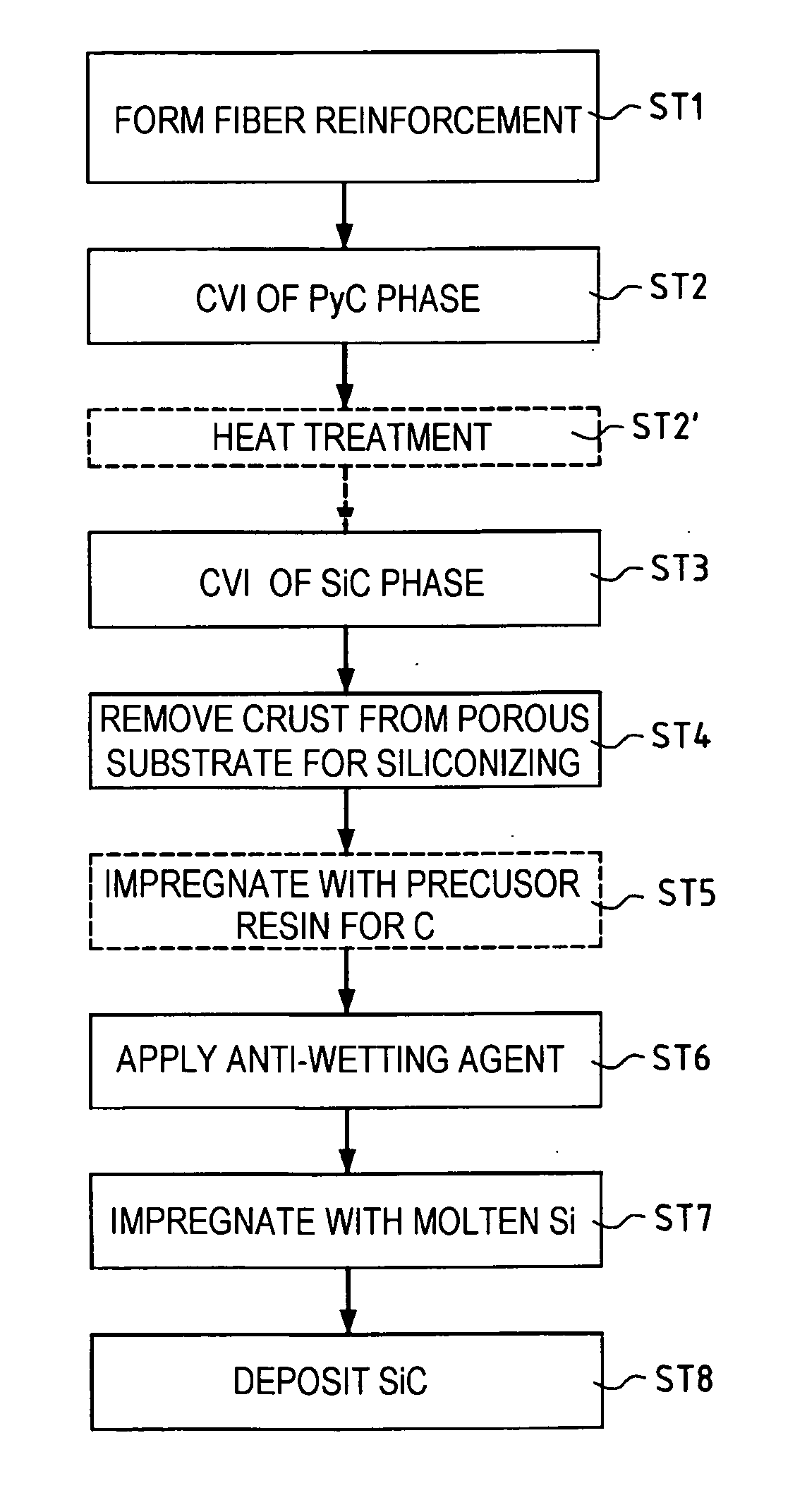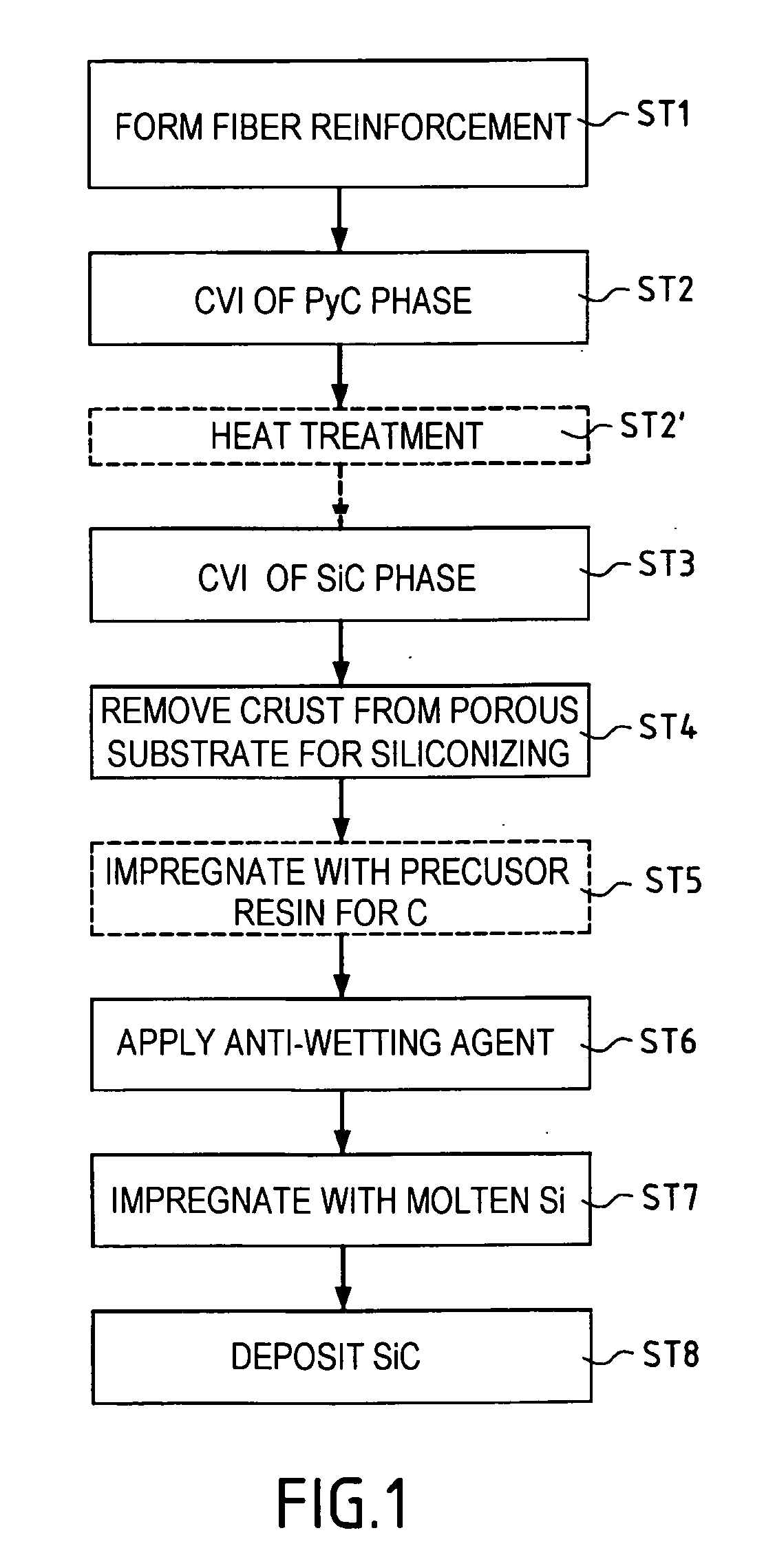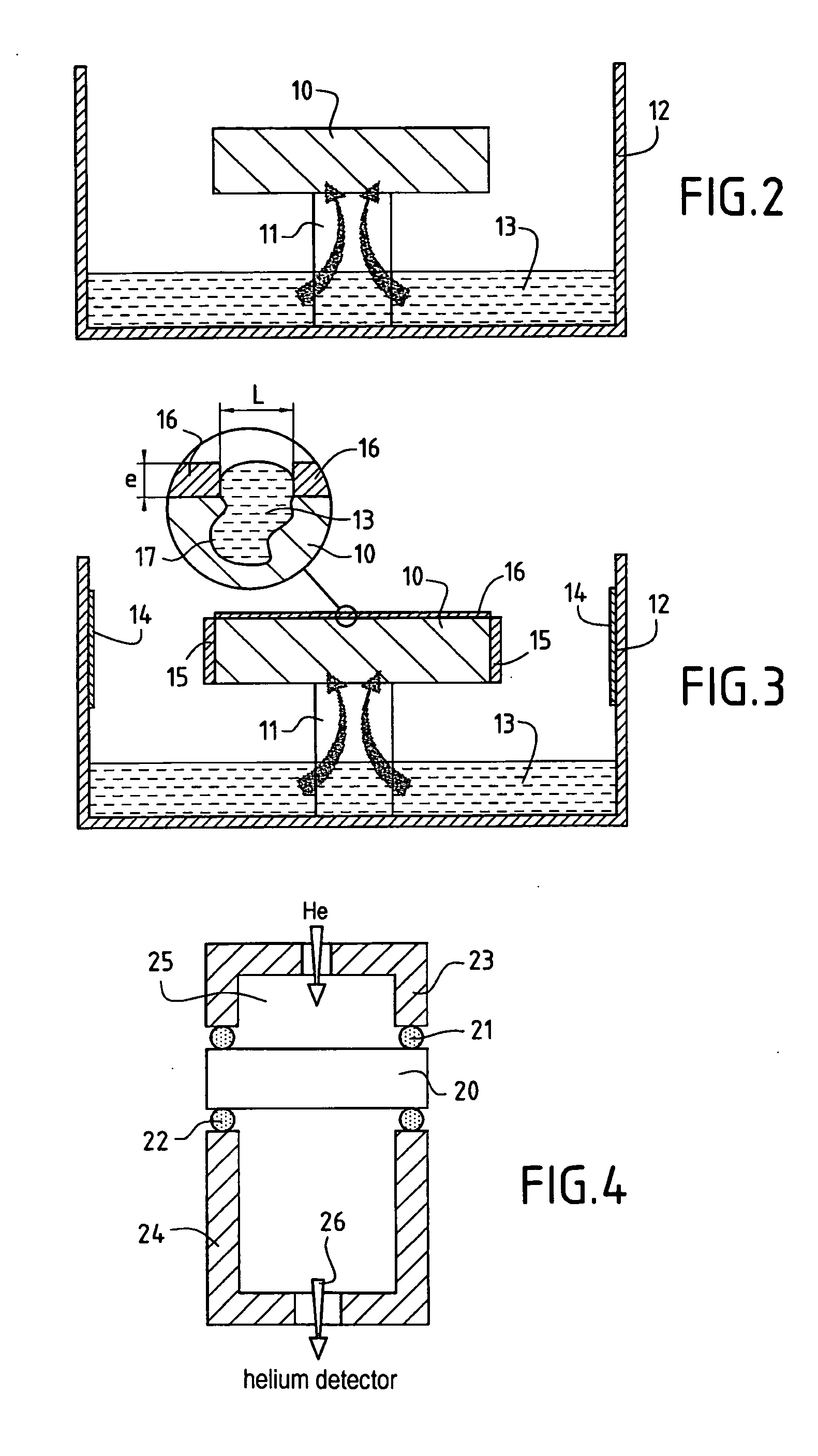Method of manufacturing a part out of impervious thermostructural composite material
a technology manufacturing methods, which is applied in the field can solve the problems of inability to manufacture parts made of thermostructural composite materials, inability to resist cracks or pores of greater or smaller dimensions, and inability to meet the requirements of the application of the material, so as to avoid leakag
- Summary
- Abstract
- Description
- Claims
- Application Information
AI Technical Summary
Benefits of technology
Problems solved by technology
Method used
Image
Examples
Embodiment Construction
[0032] The method of the invention for manufacturing a part out of thermostructural composite material that is impervious comprises forming a porous substrate of C / C—SiC composite (reinforcement made of carbon fibers or carbon-core fibers and matrix comprising a carbon phase and a silicon carbide phase), and impregnating the porous substrate as formed in this way with molten silicon so as to fill in its pores and make it highly impervious.
[0033] With reference to FIG. 1, an implementation of a method in accordance with the invention for manufacturing a part out of thermostructural composite material that is impervious comprises the following steps.
[0034] The first step (step ST1) consists in forming fiber reinforcement from refractory fibers, in particular carbon fibers or carbon-core fibers. It is preferable to select fibers having a coefficient of expansion that is as compatible as possible with the coefficients of the material that are to be present in the final part made in ac...
PUM
| Property | Measurement | Unit |
|---|---|---|
| thick | aaaaa | aaaaa |
| temperature | aaaaa | aaaaa |
| mean length | aaaaa | aaaaa |
Abstract
Description
Claims
Application Information
 Login to View More
Login to View More - R&D
- Intellectual Property
- Life Sciences
- Materials
- Tech Scout
- Unparalleled Data Quality
- Higher Quality Content
- 60% Fewer Hallucinations
Browse by: Latest US Patents, China's latest patents, Technical Efficacy Thesaurus, Application Domain, Technology Topic, Popular Technical Reports.
© 2025 PatSnap. All rights reserved.Legal|Privacy policy|Modern Slavery Act Transparency Statement|Sitemap|About US| Contact US: help@patsnap.com



